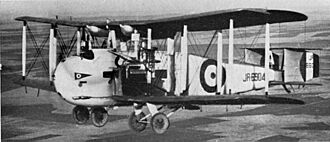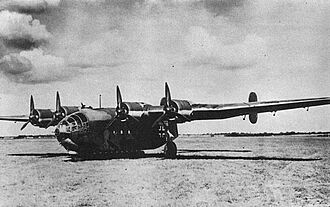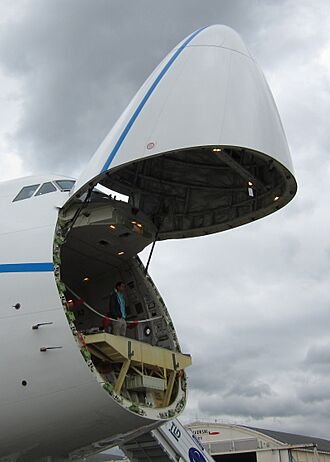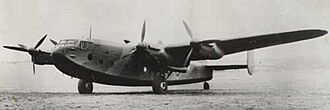Cargo aircraft facts for kids

A cargo aircraft is a special airplane built or changed to carry cargo (goods) instead of people. You might also hear it called a freight aircraft, freighter, airlifter, or cargo jet. These planes usually have big doors to load items. They don't have passenger seats or fancy features. Instead, they have basic areas for the crew, like a small kitchen, bathroom, and beds on bigger planes. Cargo planes are used by airlines, private companies, or even a country's armed forces.
Planes made just for cargo often have unique features. They have a wide body to fit large items. Their wings are often high up, so the cargo area is closer to the ground. They also have many wheels to land in rough places. A high tail allows vehicles to drive right into the plane.
By 2015, special cargo planes carried 43% of all air cargo. The other 57% was carried in the cargo holds of regular passenger planes. Experts predict that the number of cargo planes will grow a lot. It is expected to increase from 1,782 planes in 2019 to 2,920 by 2039.
Contents
History of Cargo Planes


Airplanes started carrying cargo as early as 1911. They first carried air mail. By the mid-1920s, companies began designing planes just for cargo.
In the 1920s, the UK needed planes to move troops and supplies quickly. The Vickers Vernon was the first plane made for troop transport. It started service in 1921. In 1923, the RAF used it to fly nearly 500 troops in the first ever strategic airlift. Later, Vickers Victoria planes helped in the Kabul Airlift. They rescued people from a civil war.
During World War II, Germany designed the Arado Ar 232. This was the first aircraft built specifically as a cargo plane. Most other countries used cargo versions of passenger planes. The C-47 Skytrain, a version of the Douglas DC-3, was very common. A big step forward happened in 1939. The Junkers Ju 90 military transport plane introduced a rear loading ramp. This ramp could lift the back of the plane. It made loading much easier.
After the war, the Berlin Airlift showed how important cargo planes were. The Soviet Union blocked land routes to West Berlin. The West used many planes to deliver food and supplies. Older planes like the C-47 took too long to unload. Newer planes like the Douglas C-54 Skymaster were much faster. This showed that new cargo planes needed flat cargo decks.
In the years after the war, new cargo planes were developed. The C-123 Provider had a special tail shape. This allowed for a much larger rear loading ramp. The invention of the turboprop engine changed cargo planes a lot. The C-130 Hercules is a great example. It is still used today and is a standard for military transport planes.
"Strategic" cargo aircraft became very important in the 1960s. These planes could carry the heaviest loads, like main battle tanks, across long distances. The Lockheed C-5 Galaxy was one of the first. The Antonov An-225 became the world's largest aircraft. The Boeing 747 was also designed to carry a lot of cargo. Its unique "bump" on top keeps the crew safe from shifting cargo.
When the Airbus A380 was first planned, there was also a cargo version. It would have been the second largest cargo plane after the An-225. In 2020, during the COVID-19 outbreak, some A380 passenger planes were used to carry medical supplies. They could hold a lot of cargo in their lower decks.
Why Cargo Aircraft Are Important Today
Cargo planes have many uses. Today, they are super important, especially with the rise of online shopping. Planes can carry almost anything. This includes fresh food, medical supplies, cars, and even animals. Since many items are made worldwide, air cargo helps them arrive quickly.
Air cargo adds a lot to global trade. It moves over US$6 trillion worth of goods. This is about 35% of all world trade by value. This helps keep product costs low. It also lets people buy more items and keeps stores stocked.
Cargo aircraft are also important for jobs. In the United States, air cargo companies employ many people. In August 2023, U.S. cargo airlines had over 268,000 workers. This was 34% of all jobs in the airline industry.
Types of Cargo Aircraft
Most commercial cargo planes flying today used to be passenger planes. But there are other ways cargo planes are developed.
Passenger Planes Turned into Cargo Planes
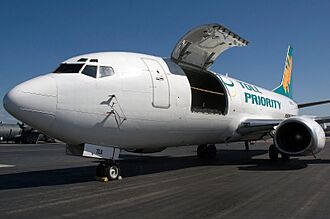
Many passenger planes can be changed into freighters. This involves adding a large cargo door. The floor is made stronger to hold heavy loads. All the passenger seats and equipment are removed. New walls, ceilings, and lighting are installed. Special engineering teams do this work. This gives the aircraft another 15 to 20 years of use.
Companies like Aeronautical Engineers Inc. convert planes like the Boeing 737 and McDonnell Douglas MD-80. Israel Aerospace Industries also converts many types of Boeing and Airbus planes. This process can take several months. Converting a plane is often cheaper than building a brand new cargo plane.
These converted planes use older technology. This means they might cost more to operate than new planes. Also, since they weren't designed for cargo, loading and unloading might not be perfect. They might also be pressurized more than needed for cargo.
Planes Built Only for Cargo
A dedicated commercial air freighter is a plane designed from the start to carry cargo. It is not limited by passenger or military needs. For a long time, people debated if these planes were worth the cost. Some cargo companies believed they could make more money with such planes.
NASA (the U.S. space agency) studied this idea. They found that planes built only for cargo could lower trip costs by 20%. They could also be 15% cheaper to buy. This is because they are made perfectly for cargo. They have the best loading systems, floors, and body shapes for freight. However, these findings depend on fuel costs and how much air cargo demand grows.
The main benefit is that everything is optimized for cargo. But building a new plane from scratch is very expensive. This raises the plane's price and its operating costs. It also means more financial risk for investors.
Planes Designed for Both Civil and Military Use
Sometimes, a plane is designed for both civilian and military use. One good thing about this is that the development costs can be shared. Also, the military might need fewer planes. They could use civilian planes in emergencies.
However, there can be downsides. The design might have to make compromises. Some features good for military use might not be good for civilian cargo. Each plane might carry extra weight it wouldn't need otherwise. This extra weight can reduce how much cargo it can carry. It also affects how much money the commercial version can make.
Unpiloted Cargo Aircraft
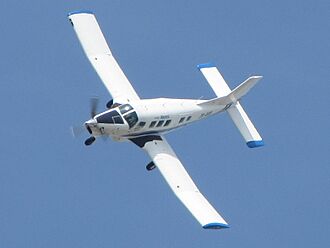
With the rise of e-commerce and fast delivery, companies are developing cargo planes without pilots. These are called UAV freighters.
- Elroy Air in California wants to use drones to replace trucks on difficult routes.
- Natilus plans a huge, unpiloted freighter the size of a Boeing 747. It would fly across the Pacific Ocean.
- Sabrewing Aircraft is working on smaller, regional unpiloted freighters.
- The Chinese Academy of Sciences flew a drone called AT200 in 2017. It can carry 3,300 pounds.
- Chinese company SF Express tested a medium-altitude drone for emergency deliveries. They plan a larger drone that can carry 20 tons over long distances.
- Boeing also flew its Boeing Cargo Air Vehicle prototype. This is a drone that can take off and land vertically.
Another company, Dorsal Aircraft, wants to make planes where the cargo containers are part of the plane's structure. This could make overseas air freight much cheaper.
In China, Beihang UAS Technology developed the Harbin BZK-005 drone. It can carry 1.2 tons over 1,200 kilometers. Garuda Indonesia, an airline, plans to use these drones. They will connect remote areas with limited airports.
Examples
Early Air Mail and Airlift Logistics Aircraft
- Avro Lancastrian (Transatlantic mail)
- Avro York (Berlin Airlift)
- Boeing C-7000
- Curtiss JN-4
- Douglas M-2
- Douglas DC-3
- Douglas DC-4
- Douglas DC-6
Converted Airliners
- Airbus A300
- Airbus A310
- Airbus A320 family
- Airbus A330
- Airbus A350
- ATR 72
- Boeing 727
- Boeing 737
- Boeing 747
- Boeing 757
- Boeing 767
- Boeing 777
- Bombardier Dash 8-100/-300
- Bristol Britannia
- British Aerospace 146QT
- British Aerospace ATPF
- Bombardier CRJ-200
- Douglas DC-3
- Douglas DC-8
- Douglas DC-9
- Handley Page Herald
- Ilyushin Il-96
- McDonnell Douglas DC-10
- McDonnell Douglas MD-11
- Tupolev Tu-204
Oversize Transport Aircraft
- Aero Spacelines Mini Guppy
- Aero Spacelines Pregnant Guppy
- Aero Spacelines Super Guppy
- Airbus Beluga A300B4-608ST
- Airbus BelugaXL A330-743L
- Boeing 747 LCF Dreamlifter
Light Cargo Aircraft
- Antonov An-2
- Basler BT-67
- Beechcraft 1900
- CASA C-212 Aviocar
- Cessna Caravan – with freight door and belly pod
- Cessna 408 SkyCourier – made with FedEx Express
- de Havilland Canada DHC-2 Beaver
- de Havilland Canada DHC-6 Twin Otter
- Dornier 228
- Douglas C-47 Skytrain
- Embraer EMB 110 Bandeirante
- Fairchild Swearingen Metroliner
- Harbin Y-12
- Indonesian Aerospace N-219
- LET 410
- Shorts 330 – with a drop ramp and twin tails
- Short Skyvan
Military Cargo Aircraft
- Airbus A330 MRTT
- Airbus A400M Atlas
- Alenia C-27J Spartan
- Antonov An-12
- Antonov An-22
- Antonov An-26
- Antonov An-32
- Antonov An-124 Ruslan
- Antonov An-225 Mriya
- Antonov An-178
- Blackburn Beverley
- Boeing C-17 Globemaster III
- Embraer KC-390
- Handley Page Hastings
- Ilyushin Il-76
- Kawasaki C-2
- Lockheed C-5 Galaxy
- Lockheed C-130 Hercules (civilian version: L-100)
- Lockheed C-141 Starlifter
- Shaanxi Y-9
- Short Belfast
- Xian Y-20
Experimental Cargo Aircraft
- Hughes H-4 Hercules ("Spruce Goose")
- Lockheed R6V Constitution
- LTV XC-142
Comparing Cargo Aircraft
| Aircraft | Cargo Space (m3) |
Max Load | Speed | Range | Main Use |
|---|---|---|---|---|---|
| Airbus A400M | 270 | 37,000 kg (81,571 lb) | 780 km/h (420 kn) | 6,390 km (3,450 nmi) | Military |
| Airbus A300-600F | 391.4 | 48,000 kg (105,822 lb) | – | 7,400 km (4,000 nmi) | Commercial |
| Airbus A330-200F | 475 | 70,000 kg (154,324 lb) | 871 km/h (470 kn) | 7,400 km (4,000 nmi) | Commercial |
| Airbus A380 | 342 | 68,000 kg (149,914 lb) | 871 km/h (470 kn) | 14,800 km (8,000 nmi) | Commercial |
| Airbus Beluga | 1210 | 47,000 kg (103,617 lb) | – | 4,632 km (2,500 nmi) | Commercial |
| Airbus BelugaXL | 2615 | 53,000 kg (116,845 lb) | – | 4,074 km (2,200 nmi) | Commercial |
| Antonov An-124 | 1028 | 150,000 kg (330,693 lb) | 800 km/h (430 kn) | 5,400 km (2,900 nmi) | Both |
| Antonov An-22 | 639 | 80,000 kg (176,370 lb) | 740 km/h (400 kn) | 10,950 km (5,910 nmi) | Both |
| Antonov An-225 | 1300 | 250,000 kg (551,156 lb) | 800 km/h (430 kn) | 15,400 km (8,316 nmi) | Commercial |
| Boeing C-17 | 77,519 kg (170,899 lb) | 830 km/h (450 kn) | 4,482 km (2,420 nmi) | Military | |
| Boeing 737-700C | 107.6 | 18,200 kg (40,124 lb) | 931 km/h (503 kn) | 5,330 km (2,880 nmi) | Commercial |
| Boeing 757-200F | 239 | 39,780 kg (87,700 lb) | 955 km/h (516 kn) | 5,834 km (3,150 nmi) | Commercial |
| Boeing 747-8F | 854.5 | 134,200 kg (295,862 lb) | 908 km/h (490 kn) | 8,288 km (4,475 nmi) | Commercial |
| Boeing 747 LCF | 1840 | 83,325 kg (183,700 lb) | 878 km/h (474 kn) | 7,800 km (4,200 nmi) | Commercial |
| Boeing 767-300F | 438.2 | 52,700 kg (116,184 lb) | 850 km/h (461 kn) | 6,025 km (3,225 nmi) | Commercial |
| Boeing 777F | 653 | 103,000 kg (227,076 lb) | 896 km/h (484 kn) | 9,070 km (4,900 nmi) | Commercial |
| Bombardier Dash 8-100 | 39 | 4,700 kg (10,362 lb) | 491 km/h (265 kn) | 2,039 km (1,100 nmi) | Commercial |
| Lockheed C-5 | 122,470 kg (269,999 lb) | 919 km/h | 4,440 km (2,400 nmi) | Military | |
| Lockheed C-130 | 20,400 kg (44,974 lb) | 540 km/h (292 kn) | 3,800 km (2,050 nmi) | Military | |
| Douglas DC-10-30 | 77,000 kg (169,756 lb) | 908 km/h (490 kn) | 5,790 km (3,127 nmi) | Commercial | |
| McDonnell Douglas MD-11 | 440 | 91,670 kg (202,098 lb) | 945 km/h (520 kn) | 7,320 km (3,950 nmi) | Commercial |
See also
 In Spanish: Avión de carga para niños
In Spanish: Avión de carga para niños
- Airlift
- Air transport
- Cargo airline
- Combi aircraft
- Modular aircraft
- Preighter


